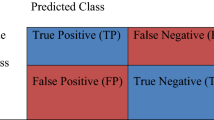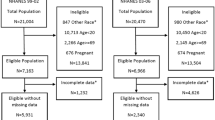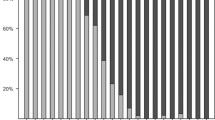Abstract
Obesity is a critical public health problem associated with various complications and diseases. Accurate prediction of body fat is crucial for diagnosing obesity. Various measurement methods, including underwater weighing, dual energy X-ray absorptiometry, bioelectrical impedance analysis, magnetic resonance imaging, air displacement plethysmography, and near infrared interactance, have been used to assess body fat. These measurement methods, however, require special equipment associated with high-cost tests. The aim of this study is to investigate the use of machine learning-based models to accurately predict the body fat percentage. Considering the fact that off-the-shelf machine learning-based models are typically sensitive to noise data, we propose a fuzzy-weighted Gaussian kernel-based Relative Error Support Vector Machine (RE-SVM) for body fat prediction. We first design a fuzzy-weighted operation, which applies fuzzy weights to the error constraints of the RE-SVM, to alleviate the influence of noise data. Next, we also apply the fuzzy weights to improve the Gaussian kernel by considering the importance of different samples. Computational experiments and statistical tests conducted confirm that our proposed approach is able to significantly outperform other models being compared for body fat prediction across different performance metrics used. The proposed approach offers a viable alternative for diagnosing obesity when high-cost measurement methods are not available.

Similar content being viewed by others
References
San Martin R, Brito J, Siques P, León-Velarde F (2017) Obesity as a conditioning factor for high-altitude diseases. Obes Facts 10(4):363–372
Lavie CJ, De Schutter A, Parto P, Jahangir E, Kokkinos P, Ortega FB, Arena R, Milani RV (2016) Obesity and prevalence of cardiovascular diseases and prognosis—the obesity paradox updated. Prog Cardiovasc Dis 58(5):537–547
Rosenthal RJ, Morton J, Brethauer S, Mattar S, De Maria E, Benz JK, Titus J, Sterrett D (2017) Obesity in America. Surg Obes Relat Dis 13(10):1643–1650
Fan JG, Kim SU, Wong VWS (2017) New trends on obesity and NAFLD in Asia. J Hepatol 67(4):862–873
Collaborators GO (2017) Health effects of overweight and obesity in 195 countries over 25 years. New Engl J Med 377(1):13–27
Fedewa MV, Nickerson BS, Esco MR (2020) The validity of relative fat mass and body adiposity index as measures of body composition in healthy adults. Meas Phys Educ Exerc Sci 24(2):137–146
Roberts J, Liu Q, Cao C, Jackson SE, Zong X, Meyer GA, Yang L, Cade WT, Zheng X, López-Sánchez GF et al (2020) Association of hot tea consumption with regional adiposity measured by dual-energy x-ray absorptiometry in NHANES 2003–2006. Obesity 28(2):445–451
Tinsley GM, Moore ML (2020) Body fat gain and loss differentially influence validity of dual-energy x-ray absorptiometry and multifrequency bioelectrical impedance analysis during simultaneous fat-free mass accretion. Nutr Res 75:44–55
Hu HH, Branca RT, Hernando D, Karampinos DC, Machann J, McKenzie CA, Wu HH, Yokoo T, Velan SS (2020) Magnetic resonance imaging of obesity and metabolic disorders: summary from the 2019 ISMRM workshop. Magn Reson Med 83(5):1565–1576
Josefson JL, Nodzenski M, Talbot O, Scholtens DM, Catalano P (2019) Fat mass estimation in neonates: anthropometric models compared with air displacement plethysmography. Br J Nutr 121 (3):285–290
Fukuda DH, Wray ME, Kendall KL, Smith-Ryan AE, Stout JR (2017) Validity of near-infrared interactance (futrex 6100/xl) for estimating body fat percentage in elite rowers. Clin Physiol Funct Imaging 37(4):456–458
Keivanian F, Chiong R, Hu Z (2019) A fuzzy adaptive binary global learning colonization-MLP model for body fat prediction. In: Proceedings of the 3rd International Conference on Bio-engineering for Smart Technologies (BioSMART). IEEE, pp 1–4
Alimuddin SW, Sadmita S et al (2020) The relationship of body mass index and body fat composition with the foot arch among osteoarthritis patients. Enferm Clín 30:168–171
Dai H, Alsalhe TA, Chalghaf N, Riccò M, Bragazzi NL, Wu J (2020) The global burden of disease attributable to high body mass index in 195 countries and territories, 1990–2017: an analysis of the global burden of disease study. PLoS Med 17(7):e1003198
Chiong R, Fan Z, Hu Z, Chiong F (2021) Using an improved relative error support vector machine for body fat prediction. Comput Methods Progr Biomed 198:105749
DeGregory K, Kuiper P, DeSilvio T, Pleuss J, Miller R, Roginski J, Fisher C, Harness D, Viswanath S, Heymsfield S et al (2018) A review of machine learning in obesity. Obes Rev 19 (5):668–685
Kupusinac A, Stokić E (2014) Predicting body fat percentage based on gender, age and BMI by using artificial neural networks. Comput Methods Progr Biomed 113(2):610–619
Shao YE (2014) Body fat percentage prediction using intelligent hybrid approaches. Sci World J 2014:383910
Lim U, Turner SD, Franke AA, Cooney RV, Wilkens LR, Ernst T, Albright CL, Novotny R, Chang L, Kolonel LN et al (2012) Predicting total, abdominal, visceral and hepatic adiposity with circulating biomarkers in Caucasian and Japanese American women. PloS One 7(8):e43502
Fang WH, Yang JR, Lin CY, Hsiao PJ, Tu MY, Chen CF, Tsai DJ, Su W, Huang GS, Chang H et al (2020) Accuracy augmentation of body composition measurement by bioelectrical impedance analyzer in elderly population. Medicine 99(7):e19103
Gou J, Fan ZW, Wang C, Guo WP, Lai XM, Chen MZ (2016) A minimum-of-maximum relative error support vector machine for simultaneous reverse prediction of concrete components. Comput Struct 172:59–70
Fan Z, Gou J, Wang C, Luo W (2017) Fuzzy model identification based on fuzzy-rule clustering and its application for airfoil noise prediction. J Intell Fuzzy Syst 33(3):1603–1611
Fan Z, Chiong R, Hu Z, Lin Y (2020) A multi-layer fuzzy model based on fuzzy-rule clustering for prediction tasks. Neurocomputing 410:114–124
Huang GB, Zhu QY, Siew CK (2006) Extreme learning machine: theory and applications. Neurocomputing 70(1–3):489–501
Fan Z, Chiong R, Hu Z, Lin Y (2020) A fuzzy weighted relative error support vector machine for reverse prediction of concrete components. Comput Struct 230:106171
Lu X, Zou W, Huang M (2017) Robust spatiotemporal LS-SVM modeling for nonlinear distributed parameter system with disturbance. IEEE Trans Ind Electron 64(10):8003–8012
Nguyen L (2017) Tutorial on support vector machine. Appl Comput Math 6(4–1):1–15
Witten IH, Frank E, Hall MA, Pal CJ (2016) Data mining: practical machine learning tools and techniques. Morgan Kaufmann, San Mateo
Pal NR, Chakraborty D (2000) Mountain and subtractive clustering method: improvements and generalizations. Int J Intell Syst 15(4):329–341
Gou J, Hou F, Chen W, Wang C, Luo W (2015) Improving Wang–Mendel method performance in fuzzy rules generation using the fuzzy c-means clustering algorithm. Neurocomputing 151:1293–1304
Xiao Y, Wu J, Lin Z, Zhao X (2018) A deep learning-based multi-model ensemble method for cancer prediction. Comput Methods Progr Biomed 153:1–9
Murakami H (2015) The power of the modified Wilcoxon rank-sum test for the one-sided alternative. Statistics 49(4):781–794
Ferenci T, Kovács L (2018) Predicting body fat percentage from anthropometric and laboratory measurements using artificial neural networks. Appl Soft Comput 67:834–839
Acknowledgements
The first author wishes to acknowledge the support of an Australian Government Research Training Program scholarship to study a PhD degree in Computer Science at the University of Newcastle, Australia.
Funding
The first author acknowledges the support of an Australian Government Research Training Program scholarship to carry out this research.
Author information
Authors and Affiliations
Corresponding author
Ethics declarations
Ethical approval
This article does not contain any studies with human participants or animals performed by any of the authors.
Conflict of Interests
The authors declare that they have no conflict of interest.
Additional information
Data availability
All data included in this study is available from the first author and can also be found in the manuscript.
Code availability
All code included in this study is available from the first author upon reasonable request.
Publisher’s note
Springer Nature remains neutral with regard to jurisdictional claims in published maps and institutional affiliations.
Rights and permissions
About this article
Cite this article
Fan, Z., Chiong, R. & Chiong, F. A fuzzy-weighted Gaussian kernel-based machine learning approach for body fat prediction. Appl Intell 52, 2359–2368 (2022). https://doi.org/10.1007/s10489-021-02421-3
Accepted:
Published:
Issue Date:
DOI: https://doi.org/10.1007/s10489-021-02421-3




